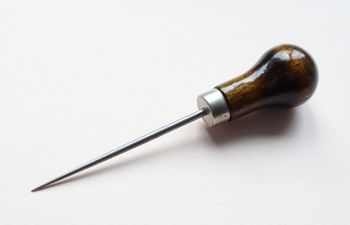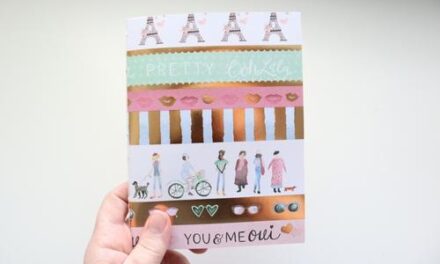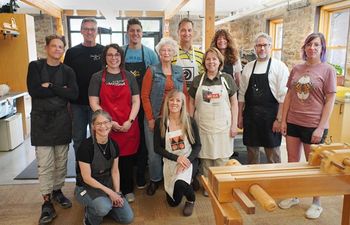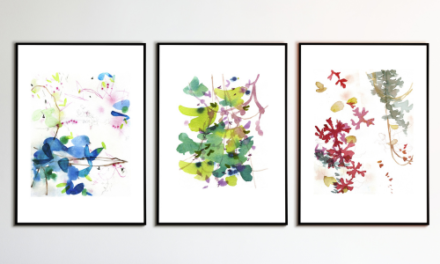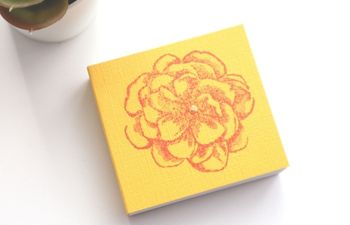A bookbinding awl is a sharp, pointy tool used to pierce through cloth, leather, paper or book board before sewing. Book artists borrowed awls from other crafts, so understanding what features are important to a bookbinder can be confusing.
In this quick guide, I’ll share the features that truly matter in a good bookbinding awl and why.
So, what makes a good bookbinding awl?
There are 3 features I always think about when choosing a bookbinding awl:
- needle length & diameter,
- handle design,
- needle type
Needle length and diameter (gauge)
It might seem kind of obvious, but the needle of an awl is the metal part extending from the handle. Most awls are thicker near the handle and taper toward the sharp end. Other awls have a straight needle that maintains its diameter from handle to point.
Tapered awls are really good because they let us choose how wide we want the pierced hole to be. This is determined by how far we push the needle through. As the needle goes further into the paper, the hole created is widened. This means we can have a very small opening or a very big one, which is handy depending on the type of book we’re making or how thick our thread is.
Straight needles are good because the size of the pierced opening is always consistent. This allows you to work faster, because you don’t have to slow down to make sure the needle pressure is the same for each sewing location. In my experience, this is really helpful when I’m working on a big book with many sections or a set of editions where each book has to be the same. The only downside is having to own several straight needle awls in different diameters to fit the project at hand.
Handle design
Awls are held in the hand while piercing paper and book board, so they need to be comfortable. “Comfort” is different for everyone, so you’ll see lots of different handle designs on the market. The two most common handle designs are long and round.
Note: Some awls have handles that are a combo of long and round, but I’m leaving those snowflakes out of this.
Long (elongated) handles
Long handle awls are usually considered light-duty. Light-duty awls work great on thin paper like text-weight or vellum. The long handle gives your hand a better grip and control, which is important when piercing fragile paper.
Round (bulbous) handles
Bulb-shaped awls fills up more of the palm, giving a sturdier grip and even force. These awls are usually considered heavy-duty. Heavy-duty awls make it easier to pierce through cloth, leather or thick sheets of paper and book board.
While bulb-shaped awls are usually heavy-duty, some are not. My preferred awl has a bulb handle (also referred to as a “gourd” shape) with a flat top. The shape allows me to hold the awl between two fingers while pressing on the flat top with my thumb. The result is a steady, even force through paper.
Needle design
There is more to the needle of a bookbinding awl than just tapered or straight shape. The design could also be long/short, pointed/hooked or interchangeable.
Here are some facts about each:
- Long needles make it easier to pierce the fold of a book with wide pages (think A4 and above)
- Short needles let you use more force and work really well on thick paper or board
- Pointed needles are great for almost every job and are used most often by bookbinders
- Hooked needles typically have a sharp barb or hook at one end for piercing stretchy stuff like cloth and leather. Be careful with the barb… it can lead to tears in material or larger holes than intended
- Interchangeable needles have a “chuck” or metal piece that can be loosened to swap out the needle with a different length, gauge or design and are a great solution to owning dozens of awls vs. just one
Bookbinding awl examples
The 4 most common awls used in bookbinding are:
- Bookbinder’s awl (custom handles)
- Light duty tapered awl
- Heavy duty tapered awl
- Bookbinder’s brass chuck (interchangeable needles)
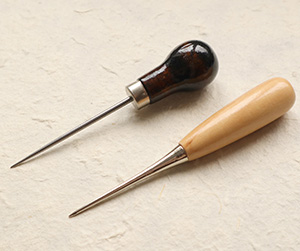
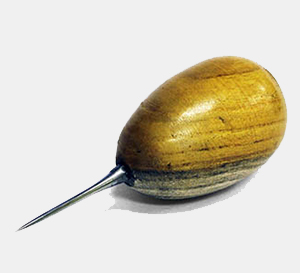

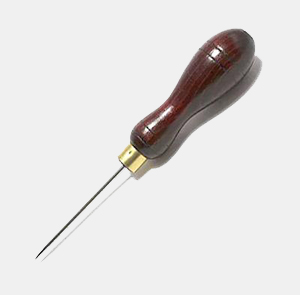
I hope this guide to bookbinding awl features was helpful. Good luck to you!
More bookbinding goodness
✨ What tools do I need to get started bookbinding?
- Bookbinding Tools & Supplies Quick Start Guide – learn all about book making tools, which to buy first & where to go online
- Pick up my popular Complete Starter Bookbinding Tools Kit – all the bookbinding essentials in one spot
🌟 Looking for a simple way to start making books?
Try a Complete Book Materials Kit. Each one has everything you need (+ tutorials & videos) to make a beautiful book without all the fuss.
Thank you for taking me along on your book making journey!
Misty
